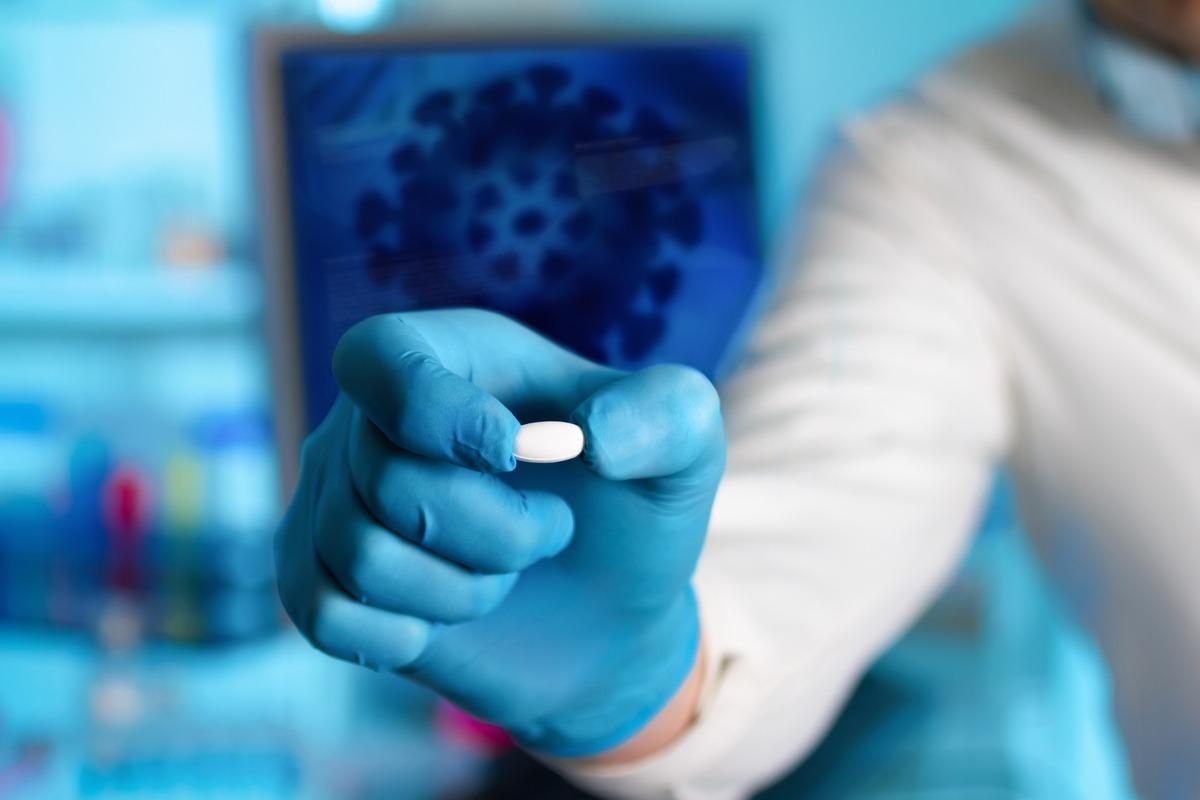In a recent study published in the iScience journal, researchers assessed potential targets in severe acute respiratory syndrome coronavirus 2 (SARS-CoV-2).
 Study: Synthetic lethality-based prediction of anti-SARS-CoV-2 targets. Image Credit: angellodeco/Shutterstock
Study: Synthetic lethality-based prediction of anti-SARS-CoV-2 targets. Image Credit: angellodeco/Shutterstock
Thousands of clinical trials registered around the world are striving to develop a safe and efficacious therapeutic method to treat coronavirus disease 2019 (COVID-19). Despite these efforts, it is of utmost urgency to determine additional effective anti-SARS-CoV-2 targets to develop drugs that either directly or indirectly target the virus.
About the study
In the present study, researchers applied the identification of clinically relevant synthetic lethality (ISLE) to a cohort comprising in vivo and in vitro SARS-CoV-2 ribonucleic acid (RNA)-sequencing datasets in order to identify antiviral targets as synthetic lethality (SL) or synthetic dosage lethality (SDL).
The team identified host cell genes that showed alterations in expression after SARS-CoV-2 infection by obtaining and analyzing multiple transcriptomic datasets comprising SARS-CoV-2 infections. These datasets included bulk RNA-sequencing data of in vitro samples obtained from Vero E6 cells and human A549-angiotensin-converting enzyme-2 (ACE-2) cells and in vivo samples collected from nasopharyngeal swabs of COVID-19 patients. The team also used single-cell RNA-sequencing data related to bronchial and nasopharyngeal samples to conduct in vivo analysis.
Differentially expressed (DE) genes identified in the SARS-CoV-2-infected samples were compared to those in the matched virus-negative control samples. DE analysis was performed in only the epithelial cells for single-cell datasets, which was the prime focus for the antiviral strategy based on SL/SDL.
The team also assessed the SL/SDL partners of the DE genes identified since they comprise potential targets for antiviral activities that can selectively impair infected host cells and thus limit their proliferative capacity. The ISLE algorithm was applied to predict the SL partners of DE genes that were downregulated after SARS-CoV-2 infection while the up-regulated genes were predicted by a modified version of ISLE.
Furthermore, the team obtained data from two published clustered regularly interspaced short palindromic repeats (CRISPR) and CRISPR-associated protein-9 (Cas9) genetic screens that determined the host genes that modulated SARS-CoV-2 replication. These included screens in the Vero E6 cell line and the human A549 cell line at two distinct multiplicities of infections (MOIs).
Results
The study results showed that a variation was found in the DE genes identified across SARS-CoV-2-infected and corresponding virus-negative datasets. However, the team also remarked overall higher-than-random pairwise similarities as a low odd ratio of 2.7 was found among the in vitro A549 cell dataset and the in vivo RNA-sequencing samples while the highest odd ratio of 12.4 was found between the in vivo single-cell samples and the in vivo bulk swabs. A pathway enrichment analysis of the DE genes showed that while these genes varied across the different datasets, they were enriched to function in similar pathways.
The SL/SDL partners recognized across the datasets exhibited higher similarities than those displayed by DE genes. Particularly, an overlap was observed among the SL/SDL partners across the A549 cell dataset and the in vivo RNA-sequencing samples which were higher than the overlap found between their associated DE genes. This indicated that the DE genes that were identified across the cell datasets were likely to be functionally similar, thus resulting in a higher chance of inducing SL/SDL interactions with the same DE genes.
The team found that the 454 SL/SDL-based targets predicted were substantially enriched for host proteins that interacted with the SARS-CoV-2 viral proteins. This indicated that these predicted targets were crucial to the biology and infection of SARS-CoV-2. Out of the 454 targets, 140 genes displayed significant activity in reducing cell viability. These 140 targets included genes that were inhibited by available drugs such as warfarin and dicoumarol, that target the VKORC1 gene.
Analysis of the 140 targets showed the enrichment of pathways including stress responses, cell cycle processes, deoxyribonucleic acid (DNA) break repair processes, RNA polymerase II transcriptions, and RNA metabolic processes. Moreover, the DE genes showed enrichment with respect to pathways such as complement cascade, innate immune processes, ion channel transport, cytokine signaling, neutrophil degranulation, and interferon signaling. Analysis of pathway enrichment based on matched pairs also showed several SL/SDL interactions including cell-cell communications, post-translational protein modification, and innate immune system.
A total of 26 top-ranked SL/SDL targets from among the 140 targets were selected for additional analysis. These top-ranked targets included VKORC1, an anticoagulant that binds to open reading frame (ORF)-7a of SARS-CoV-2 which was targeted by warfarin; MED8, a gene required for transcription activation; and EIF4G1, known for its function in cell growth, differentiation, and proliferation.
The study findings showed a synthetic lethality inference method that predicted SARS-CoV-2 targets across the viral genome. The study provided potential antiviral targets that can prove crucial in the development of novel therapeutic approaches against COVID-19.